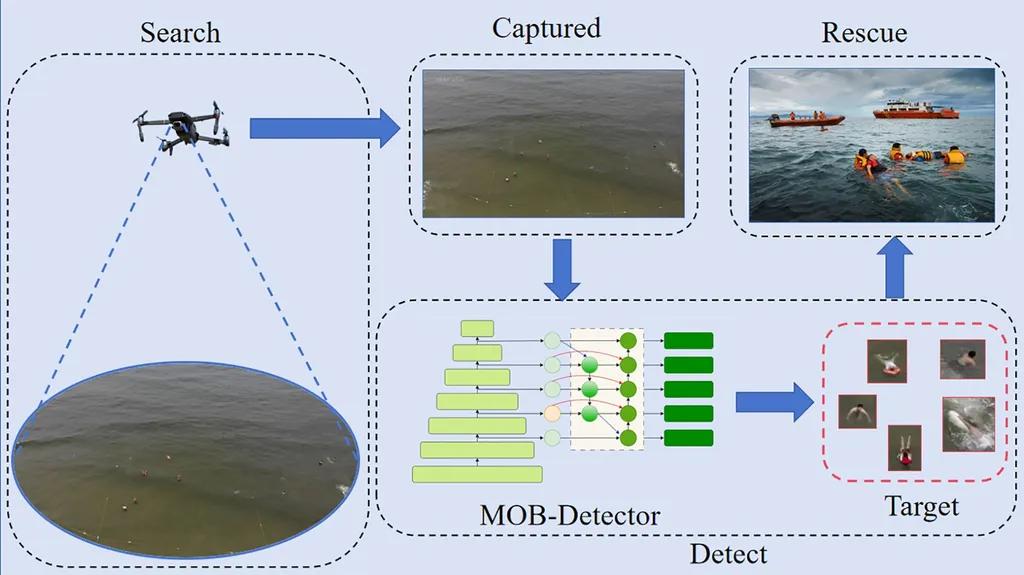In the ever-evolving world of maritime technology, a groundbreaking development has emerged that could significantly enhance the reliability and safety of autonomous underwater vehicles (AUVs). Researchers, led by Chen Weifeng from Shanghai Maritime University, have introduced a novel fault diagnosis method based on a deep learning algorithm known as the multidimensional temporal classification transformer (MTC-Transformer). This innovation, detailed in a recent study published in ‘Polish Maritime Research’ (translated as ‘Polish Maritime Research’), promises to revolutionize how we monitor and maintain AUVs, which are crucial for marine resource exploration, maritime patrol, and rescue operations.
So, what exactly does this mean for the maritime industry? Let’s break it down.
AUVs are essentially robots that operate underwater without a human occupant. They are equipped with sensors, cameras, and other tools to collect data and perform tasks. However, like any complex machinery, they are prone to faults and malfunctions. Traditional methods of fault diagnosis often involve manual inspection and analysis, which can be time-consuming and inefficient.
Enter the MTC-Transformer. This advanced algorithm is designed to process multidimensional time-series data, which is essentially data collected over time from various sources. It automatically extracts features from this data, handles multi-modal information, and is highly scalable. In simpler terms, it’s a sophisticated tool that can quickly and accurately identify potential issues in AUVs based on the data they collect.
The MTC-Transformer’s key innovations include gated fusion, which combines features from outlier-processed data and kernel principal component analysis-reduced time-series data, a dedicated fault feature amplification mechanism, and a multi-layer perceptron head for classification. These features allow it to outperform other benchmarks like WDCNN and LSTM-1DCNN in handling variable-length sequences and capturing long-range dependencies.
The results speak for themselves. When tested on the ‘Haizhe’ small quadrotor AUV fault dataset, the model achieved an impressive accuracy of 99.51% during training and 99.44% during validation. These figures underscore the model’s high accuracy, robustness, and practical efficacy for AUV fault diagnosis.
For the maritime industry, this technology presents a wealth of opportunities. AUVs are used in a variety of applications, from exploring deep-sea resources to conducting underwater inspections of offshore structures. The ability to quickly and accurately diagnose faults can significantly reduce downtime, improve safety, and enhance the overall efficiency of these operations.
As Chen Weifeng puts it, “The MTC-Transformer’s superior multi-modal data handling and improved scalability make it a game-changer for AUV fault diagnosis. It’s not just about identifying faults; it’s about doing so with unprecedented speed and accuracy.”
Moreover, the technology’s ability to handle variable-length sequences and capture long-range dependencies means it can adapt to different types of AUVs and various operational conditions. This flexibility is crucial for an industry that operates in diverse and often challenging environments.
In conclusion, the MTC-Transformer represents a significant leap forward in AUV fault diagnosis. Its high accuracy, robustness, and practical efficacy make it a valuable tool for maritime professionals. As the industry continues to embrace autonomous technologies, innovations like this will be key to ensuring their safe and efficient operation.
For those interested in the technical details, the study is available in ‘Polish Maritime Research’, providing a comprehensive overview of the MTC-Transformer and its applications. As the maritime industry continues to evolve, so too will the technologies that support it, and the MTC-Transformer is a prime example of how innovation can drive progress.

